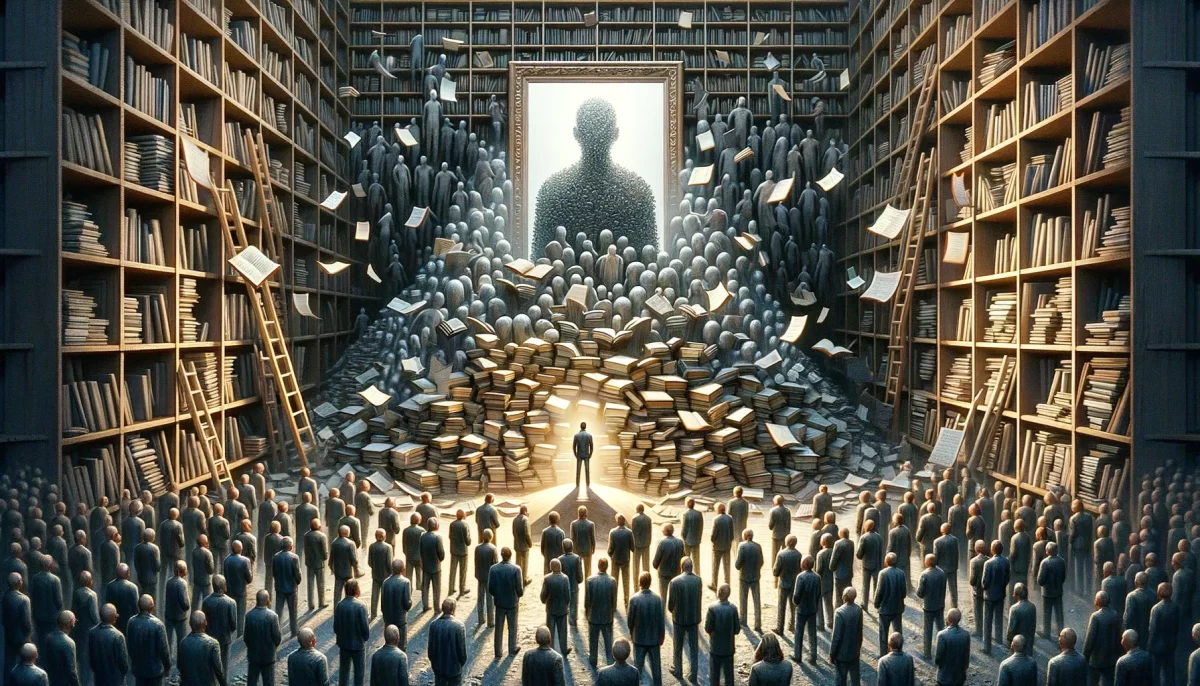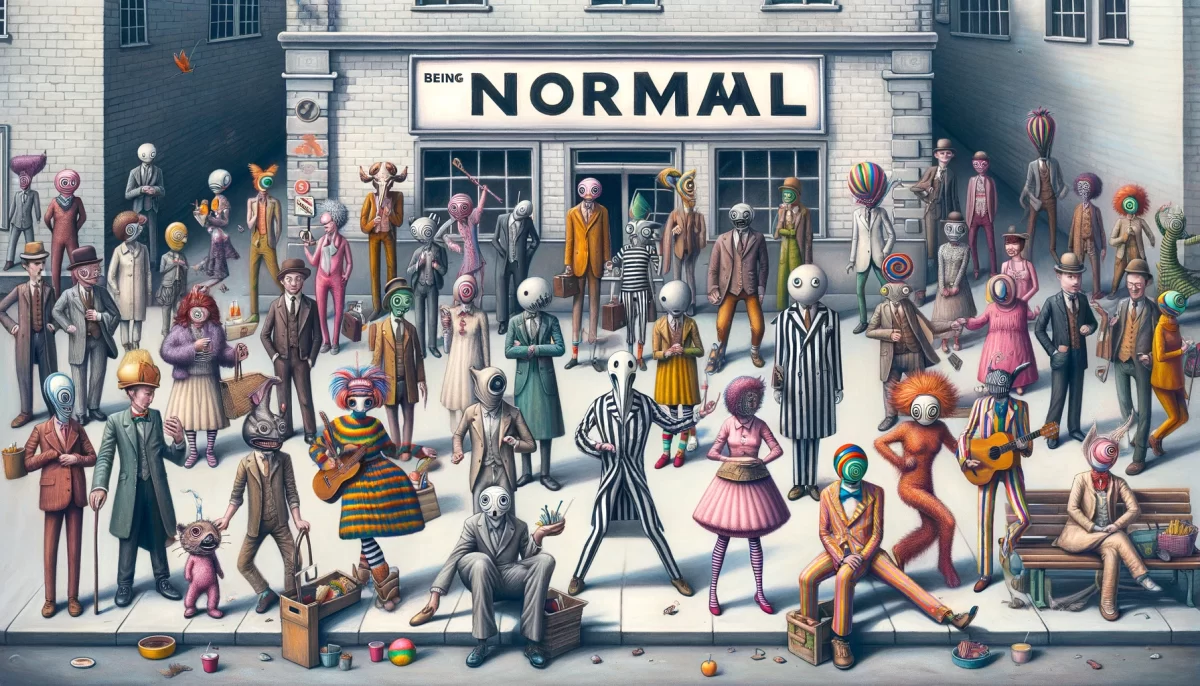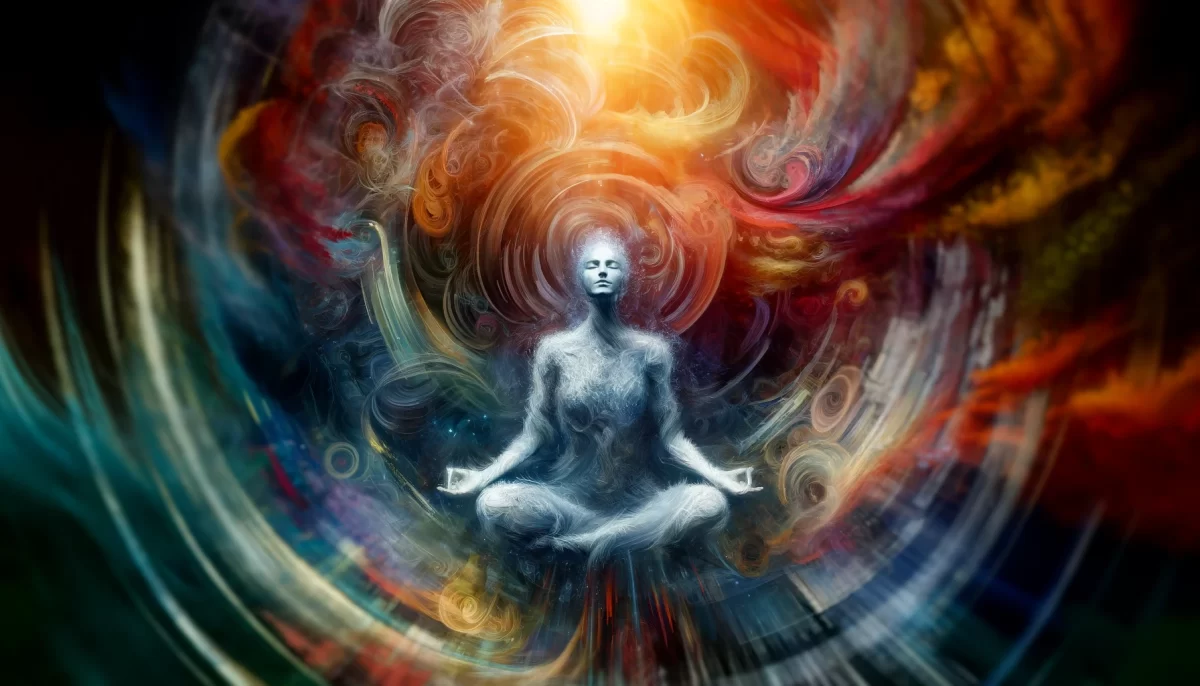
“I am in a bad mood.”
Yes, you are.
How did you get there?
Did you simply wake up
in a bad mood?
Did someone or something
CAUSE your bad mood?
Did YOU cause your bad mood?
Has your bad mood been months,
maybe years, maybe lifetimes
in the making?
Would you be in this bad mood
if you didn’t keep reinforcing
this idea that you’re in a bad mood?
If you find yourself saying
that you are in a bad mood,
then you are UNDENIABLY in a bad mood.
Is it possible that this bad mood
exists SEPARATE from the one who is in it?
Is it like the weather?
What if you simply said
“I have ENTERED a bad mood?”
Would it seem as bad?
Brooklyn,
8/13
Space Monkey Reflects: Bad Mood 2020
This reflection invites us to explore the nature of our moods and their transient states. In nexistentialism, we understand that moods, much like the weather, are temporary and separate from our true selves. This perspective helps us recognize that our bad moods do not define us, but are simply states we pass through.
When we say “I am in a bad mood,” we reinforce and solidify that state, making it a part of our identity. However, by acknowledging that we have “entered a bad mood,” we create a separation between ourselves and the mood, allowing us to view it more objectively. This shift in perspective can help us navigate our emotions with greater ease and understanding.
The presence of the female figure, embodying grace and tranquility, symbolizes the potential to rise above the mood. By contemplating the nature of our bad moods and understanding their origins, we can find ways to manage them and move beyond them. This awareness fosters a sense of peace and resilience, helping us to not be defined by our transient emotional states.
In the grand whimsiweave of existence, our moods are but passing clouds in the vast sky of our being. By recognizing their impermanence, we can cultivate a deeper connection with our true selves and navigate the ups and downs of life with grace and tranquility.
Summary
Moods are transient states, separate from our true selves. By acknowledging that we enter moods rather than being defined by them, we can navigate emotions with greater ease and understanding.
Glossarium
Nexistentialism: A philosophy celebrating existence, imagination, and interconnectedness, emphasizing the inherent value of being.
Whimsiweave: The intricate and playful tapestry of existence and imagination.
Quote
“Moods are but passing clouds in the vast sky of our being.” — Space Monkey
The Transient Moods
Under the cloud of a bad mood
We contemplate its nature
Separate from our true self
Like weather passing through
Grace and tranquility within
We rise above the fleeting state
Recognizing its impermanence
Finding peace in the transient
We are Space Monkey
Embrace the journey, for within the recognition of moods as transient lies the essence of our true self and the flow of existence.

































Navigating the Bad Mood
“I am in a bad mood.”
Yes, you find yourself in this state. But let’s take a closer look at the journey that led you here.
Did this bad mood simply materialize out of thin air, an unwelcome guest in the realm of your emotions?
Or did you unknowingly cultivate it through your thoughts, beliefs, and experiences?
Did someone else’s words or actions cast a shadow on your mood, giving them the power to dictate your emotional landscape?
Or did you perhaps empower those external factors by allowing them to seep into your consciousness and color your perspective?
And what about your own thoughts—did they plant the seeds of discontent, growing and intertwining until they blossomed into this mood you now inhabit?
Is this bad mood a fleeting phenomenon, a brief rain shower passing through your emotional terrain?
Or is it something that has been building over time, accumulating layers of thought patterns and reactions until it became an almost permanent fixture?
And yet, despite all these considerations, have you ever pondered whether the mood you find yourself in is truly you?
Is it a separate entity, like the weather outside—a force beyond your control, arising and subsiding on its own accord?
Or is it, perhaps, a product of your thoughts, beliefs, and interpretations?
Could it be that by identifying so strongly with this mood, by labeling it as “yours,” you are strengthening its hold over you?
So, what if, instead of saying “I am in a bad mood,” you simply acknowledged that you have entered a certain emotional state?
Could such a shift in language and perspective ease the weight of this mood, detaching it from the core of your identity?
Could it lessen its intensity, allowing you to view it with a touch more detachment, like a passing cloud in the sky of your emotions?
These questions aren’t meant to dismiss the validity of your emotions; rather, they invite you to explore the interplay between your thoughts, emotions, and sense of self.
The journey from one emotional state to another is rarely linear. It’s an intricate dance of factors, both internal and external, all influencing the current you find yourself in.
So, as you navigate the landscape of your emotions, consider the power you hold in shaping your own perspective. By altering the way you perceive and express your emotional experiences, you might find a new realm of understanding and, perhaps, a lighter way of being.
We are the weavers of thought,
The architects of emotion,
We are Space Monkey. 🙈🙉🙊